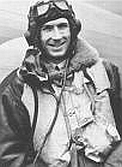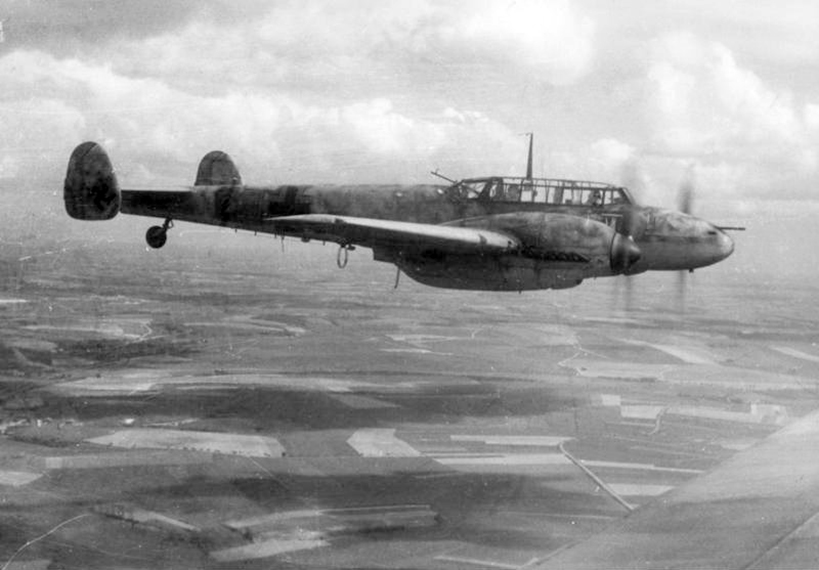Kent, John Alexander
- Date of birth:
- June 23rd, 1914 (Winnipeg/Manitoba, Canada)
- Date of death:
- October 7th, 1985
- Service number:
- 37106
- Nationality:
- Canadian
Biography
John Alexander Kent was born in Winnipeg, Canada and was as determined to fly at a young age, learned to fly and obtained his licence in 1931. He got a commercial licence in 1933 after working for the Northwest Aero Marine Company. In 1935, Kent joined the RAF and was posted to 5 FTS (Flight Training School) on March 15th before joining 19 Squadron at Duxford in February 1936 where he remained until October 1937 when he moved to the RAE Royal Aircraft Establishment at Farnborough. His jobs was to see how aircraft behaved on impacting a cable and have the whole event caught on film for scientific analysis. For his research work during which he deliberately made over 300 airborne collisions with various types of barrage balloon, Kent was awarded an Air Force Cross on February 1st, 1939.
Kent was posted to the PDU (Photographic Development Unit) in May 1940.
On August 2nd, 1940 Kent joined a newly formed 303 Squadron as a Flight Commander containing Polish pilots. His first combat victories came on September 9th when he shot down a Bf110 and a Ju88. On September 23rd he destroyed a Bf109 and damaged an Fw58 reconnaissance aircraft while intercepting a raid over Dungeness.
During a dogfight over the south coast on October 1st, Kent found himself alone with nearly forty Bf109's. During the ensuing engagement he shot down one of the Bf109's and made hits into another.
On October 26th, 1940 he was posted to Biggin Hill to take command of another highly successful group of pilots, 92 Squadron. Kent's strict discipline initially proved unpopular with the laid back attitude the 92 pilots had at the time.
On November 1st, Kent shot down a Bf109 and two more the following day. He was then posted back to Northolt as a Wing Leader in June to lead the Polish Wing of four squadrons.
He was moved again as Wing Leader to command and lead the Kenley Wing in August 1941. His first few operations over northern France with his new squadrons proved successful, claiming Bf109's on August 7th and 16th.
Kent remained with the Kenley Wing until October 1941, when he was posted back to 53 OTU at Heston and then Llandow before he was sent on a lecture tour of Canada and America late that year.
In June 1942 Kent was Station Commander of RAF Church Stanton where he remained until October of that year when he was posted to Fighter Command HQ as a Wing Commander of Training. Two months later Kent was posted to the Middle East and took command of 17 Sector in Benghazi, Libya.
After a posting to Air HQ, he returned to the UK during March 1944 for an instructor's course at the Central Flying School, Upavon.
After another posting in late 1946, Kent returned to flying duties as a Chief Test Pilot at Farnborough in 1948 and was involved until 1952 with many developments of military aviation. His final posting was awarded in August 1952 when he assumed the command of the RAF Station at Odiham.
On December 1st 1956 Kent retired from the RAF service with the rank of Group Captain and joined Kelvin Hughes (Aviation) Ltd as sales manager. He left the company after its acquisition by Smiths Industries and subsequently wrote his autobiography 'One of the Few' (1971).
Johnny Kent died on October 7th, 1985 at the age of 71 years
Do you have more information about this person? Inform us!
- Period:
- Second World War (1939-1945)
- Rank:
- Flight Lieutenant
- Awarded on:
- October 25th, 1940
"Early in October, 1940, this officer, when entirely alone, attacked 40 Messerschmitt 109's, and shot down two of them. He has personally destroyed at least four enemy aircraft. Flight Lieutenant Kent has been responsible in a large measure for the fighting efficiency of his squadron and has materially contributed to its successes. He has proved himself a born leader."
- Period:
- Second World War (1939-1945)
- Rank:
- Squadron Leader
- Awarded on:
- January 31st, 141
- Period:
- Second World War (1939-1945)
- Rank:
- Acting Wing Commander
- Awarded on:
- October 21st, 1941
"This officer has led his wing in an efficient and fearless manner on many operational sorties within the last two months. He has now destroyed a further 6 enemy aircraft, bringing his total successes to 13 destroyed and 3 probably destroyed. Wing Commander Kent has set a grand example."
Second DFC awarded as a bar for on the ribbon of the first DFC.
- Period:
- Second World War (1939-1945)
- Period:
- Second World War (1939-1945)
- Period:
- Second World War (1939-1945)
- Period:
- Second World War (1939-1945)
- Period:
- Second World War (1939-1945)
- Period:
- Second World War (1939-1945)
Sources
- Photo 1: Aces Of WW2 Homepage
- - SHORES, CH. & WILLIAMS, C., Aces High, Grub Street, London, 1994.
- The London Gazette Issue 34978 published on the 25 October 1940
- The London Gazette Issue 35060 published on the 31 January 1941
- Fifth Supplement to The London Gazette Issue 35318 published on the 17 October 1941
- Air Force Association of Canada
- The Balloon Barrage Reunion Club
- Medals at Royal Air Force Museum Hendon











